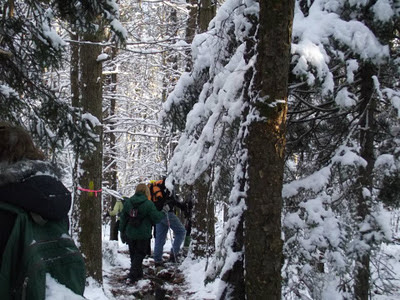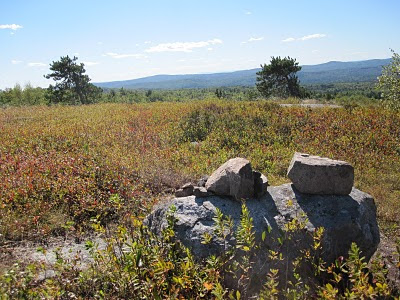
We have been holding land steward workdays to refurbish wooden property and trail signs for the past three summers, and find that it is a really efficient way to ensure that we get a good number of these signs made or restored each year. Picking away at it over the course of the year sounds like a good idea, but in practice other things always seem to be higher on the priority list! As Jason is fond of telling us, it's a fourteen step process to transform a piece of rough-cut pine into a beautifully routed and gleaming property sign. Planing, Sanding, Stenciling, Rasping, Routing, Sanding (again), Staining (twice, or 3 times), Varnishing (twice) and Painting Letters (twice, or 3 times)... whew! This is why it helps to have a big group tackle the signs and do as many as we can at once... and with so many steps, there's a task to fit everyone's talents and interests.

Mike Elmes and Bart Hunter sand the rough-cut pine

Al Cort and John Tear staining
This year's sign workdays were extremely productive. The group ended up completing 41 new or refurbished signs (it takes just as many steps to refurbish a sign as to create one from scratch, believe it or not)...which is nearly double previous years' efforts. Some gorgeous new large property signs were made, but also many smaller signs that will provide direction to hikers on Forest Society reservations across the state. A big congratulations and thank you to all who assisted with the sign workdays this year.

Crew on Day 1 with routed Welch Farm sign. From L to R: Tyler Pelland, Wes Niebling, Seth Benowitz, Hiel Lindquist, Bob Fuller, Jason Teaster, Alan Cort, John Tear

Seth Benowitz inspects some smaller signs

Seth Benowitz, Scott Lavoice, and Jason Morris work on stenciling





















